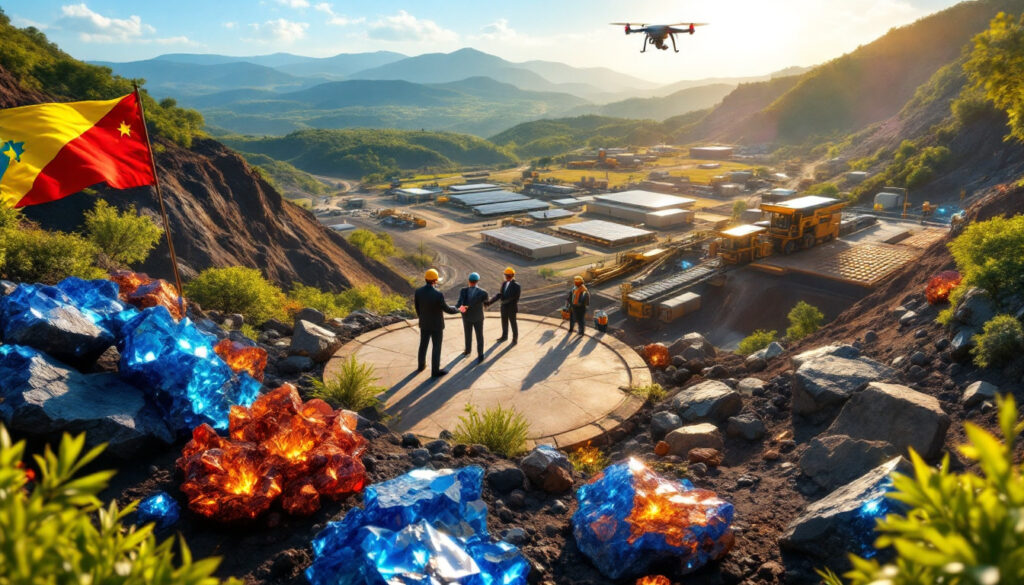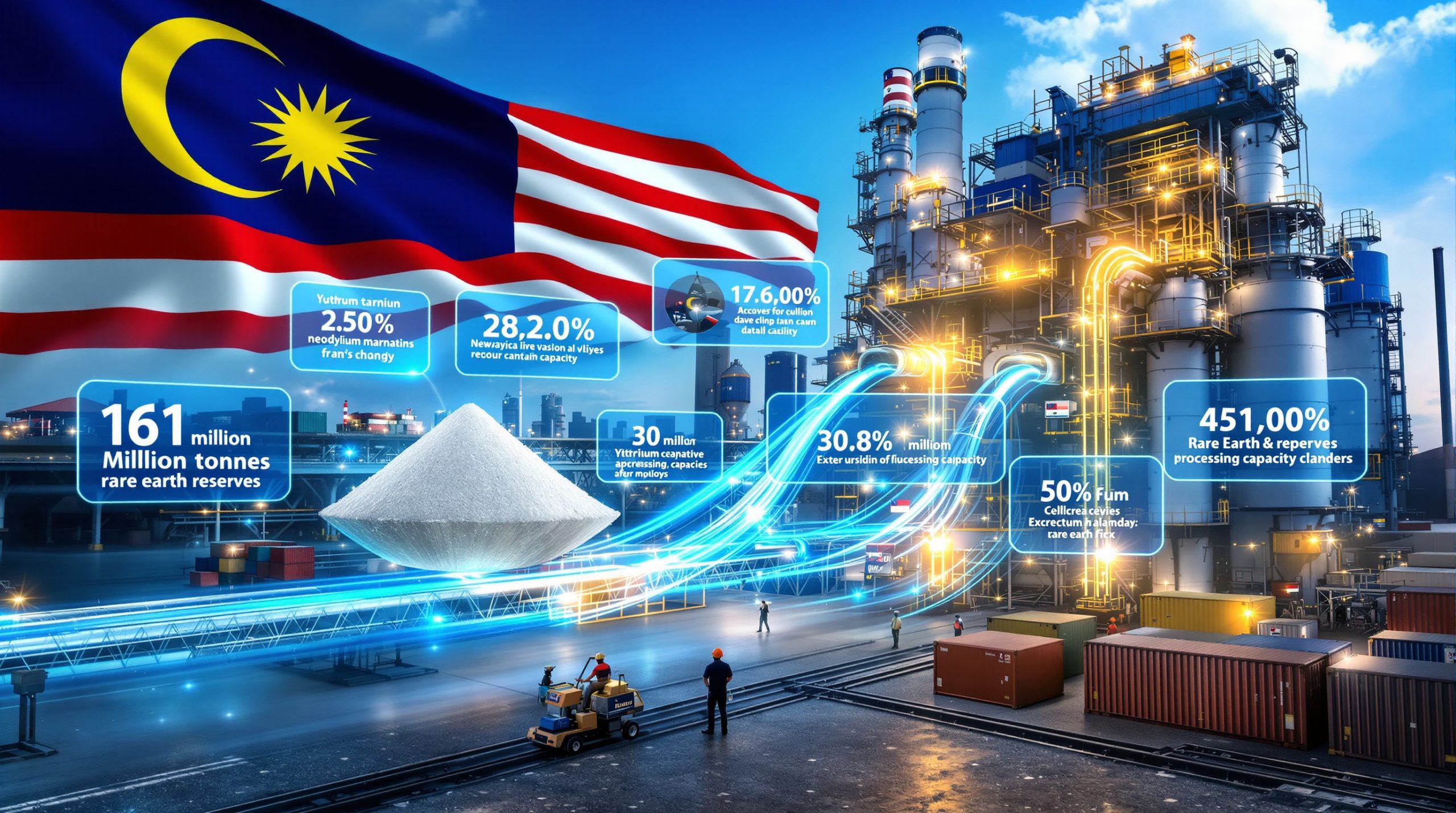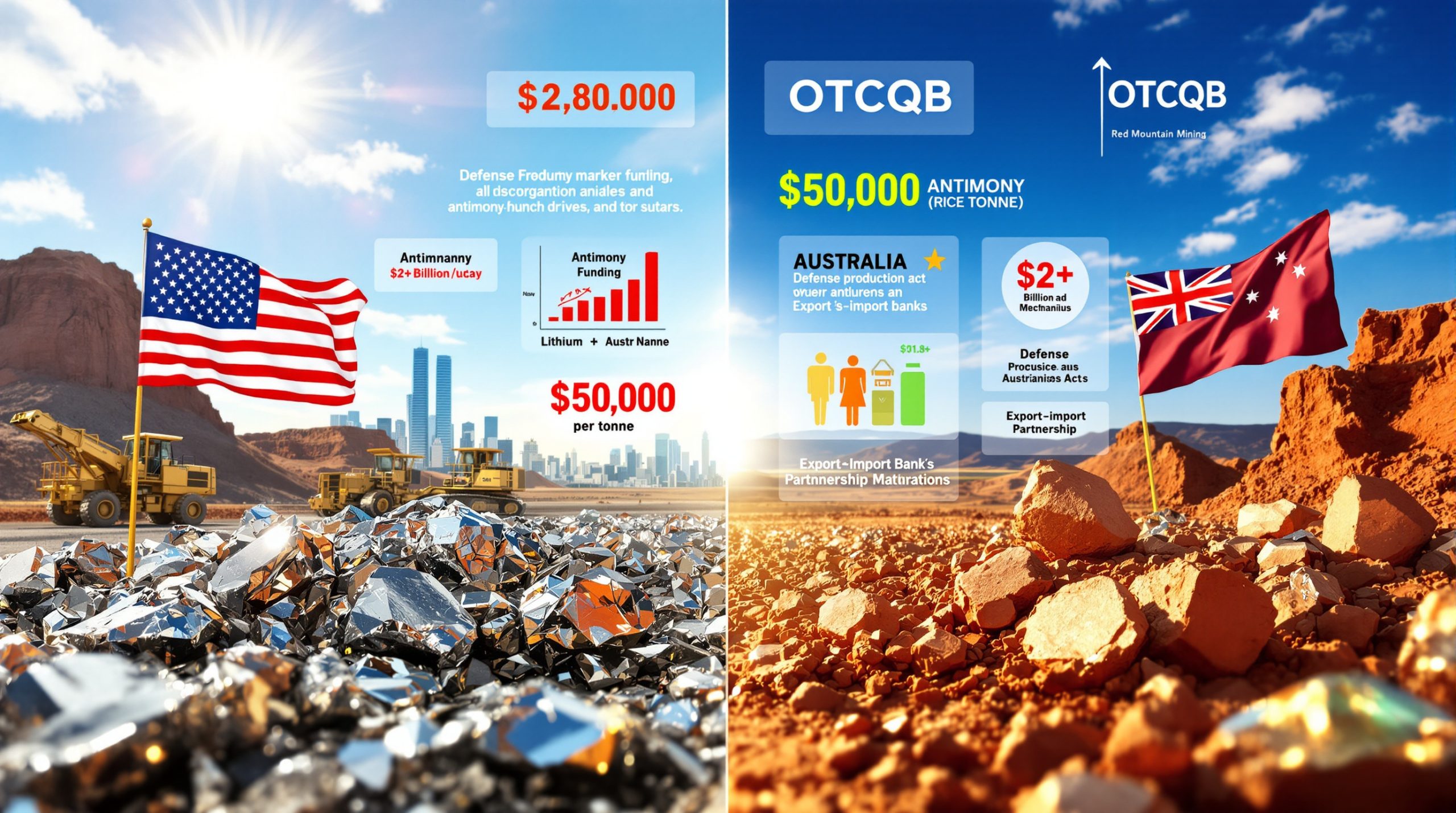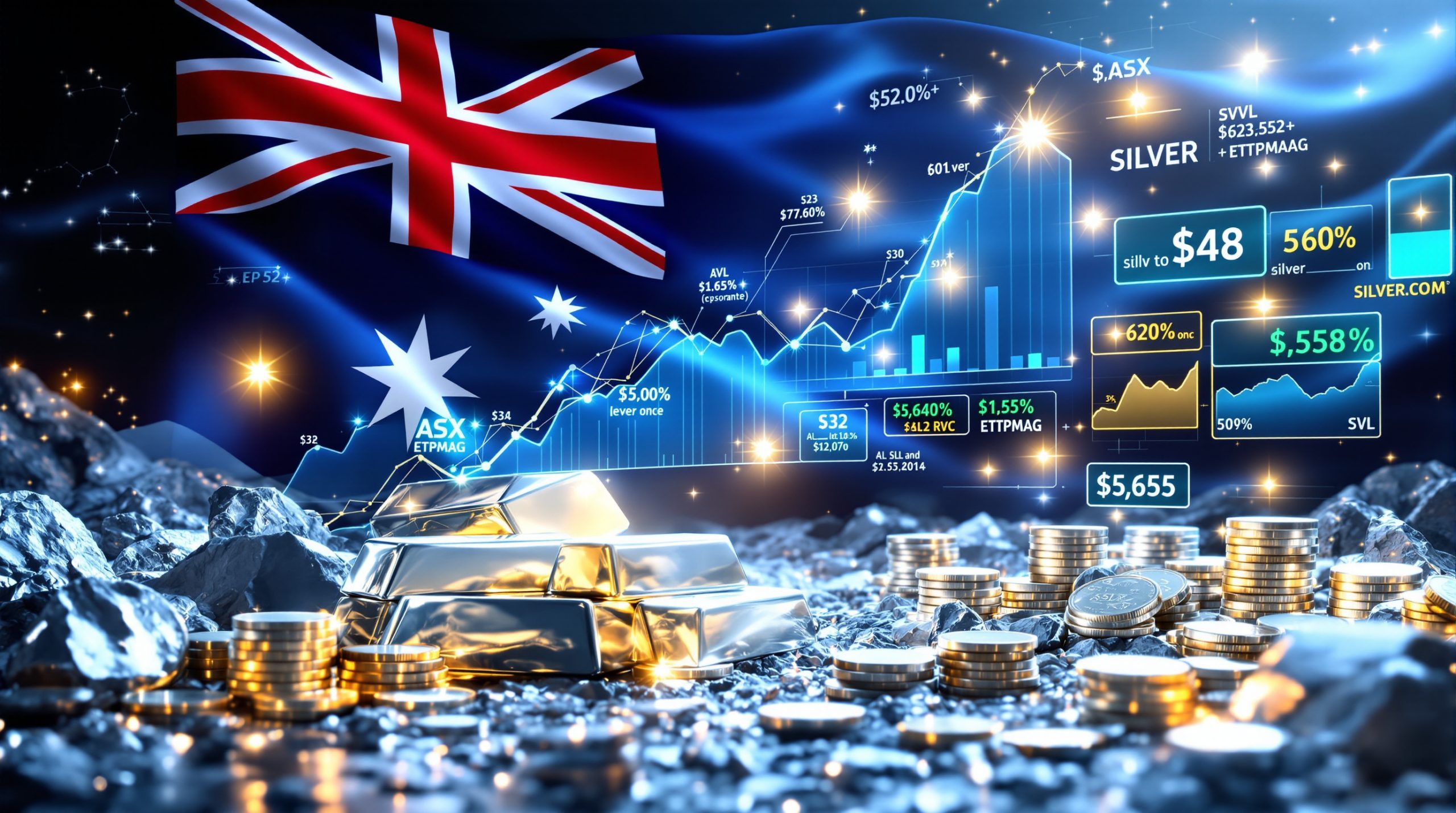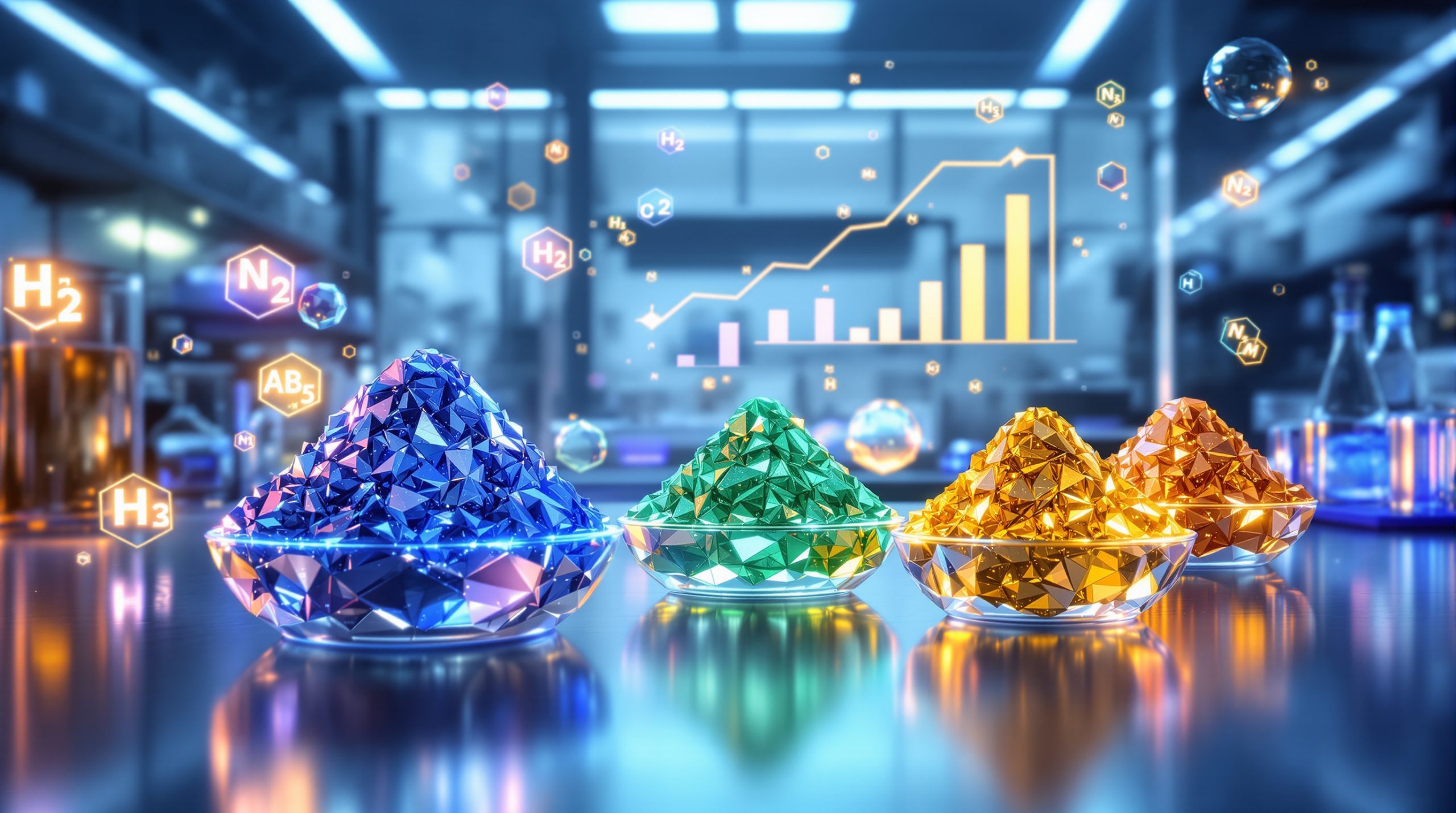Investing in the Democratic Republic of Congo: Opportunities, Challenges, and Strategic Importance
The Democratic Republic of Congo (DRC) stands at a critical crossroads in the global race for resources that will power the future. As the world transitions toward renewable energy and advanced technologies, this vast Central African nation has become an unexpected focal point of international investment interest and geopolitical maneuvering.
With its unparalleled mineral wealth, the DRC has emerged as perhaps the single most strategically important source of critical minerals needed for everything from smartphones to electric vehicles. Yet investing in mining stocks in this resource-rich nation comes with significant complexities that demand careful consideration.
What Makes the DRC a Strategic Investment Destination?
The DRC's strategic importance on the global stage stems primarily from its exceptional geological endowment. Few countries possess such concentrated mineral wealth specifically aligned with the technologies shaping our future economy.
The Critical Minerals Advantage
The DRC's mineral reserves are nothing short of extraordinary in both scale and economic importance:
- Cobalt dominance: The country holds approximately 70% of global cobalt reserves, making it the undisputed kingpin in the supply chain for this crucial battery metal
- Copper wealth: With estimated reserves of 31 million metric tons of copper, the DRC ranks among the world's top copper destinations
- Emerging lithium potential: Recent exploration has identified significant lithium deposits, particularly in the country's eastern regions, attracting new investment interest
- Strategic metal concentration: The unique geological conditions in the Central African Copperbelt have created one of the planet's most mineral-dense regions
"The DRC is not just another mining jurisdiction—it represents the single most important source of cobalt on the planet, a metal that has no viable substitute at scale in high-performance batteries," notes mining analyst James Forrester.
This mineral endowment places the DRC in an enviable position as demand for these metals is projected to increase between 400-600% by 2040, according to International Energy Agency forecasts.
Geopolitical Significance in the Global Minerals Race
The DRC's resource wealth has elevated its status in international relations and economic security strategies:
- Western nations have identified the DRC as crucial to developing supply chains independent from Chinese control
- The country sits at the center of the broader US-China technological competition, with both powers seeking advantage
- European and North American governments increasingly view access to DRC minerals as essential to their energy security
- G7 nations have developed specific diplomatic initiatives targeting the DRC's mining sector as part of critical mineral strategies
This geopolitical importance creates unique opportunities for investors positioned to navigate the complex interplay of economics, politics, and international relations that define the operating environment.
How Are Western Investors Changing the DRC's Mining Landscape?
After decades of Chinese dominance in the DRC's mining sector, Western investment is surging, bringing new approaches and technologies that are reshaping the competitive landscape.
Major Western Investment Initiatives
Recent years have witnessed remarkable capital commitments from Western sources:
- Technology-backed ventures have committed over $3.5 billion to DRC mining projects since 2021
- AI-powered exploration companies have raised $850+ million specifically for DRC-focused mineral discovery
- Venture capital firms have deployed approximately $1.2 billion into mining innovation startups operating in the country
- Strategic partnerships between technology manufacturers and mining operations have created new integrated supply chain models
These investments have introduced sophisticated technologies previously unseen in the region, particularly in exploration and resource evaluation. Machine learning algorithms are now analyzing geological data to identify promising deposits with unprecedented precision, dramatically reducing the time and cost of discovery.
Shifting Balance from Chinese Dominance
The influx of Western capital is gradually reshaping the DRC's mining ownership structure:
- Chinese entities currently control an estimated 60-70% of the DRC's industrial mining operations
- Western investment grew 35% year-over-year in 2022, accelerating to 43% growth in 2023
- The DRC government has established formal policies encouraging investment diversification, including preferential licensing terms for non-Chinese operators
- New bilateral investment agreements with the US, EU, and UK have created improved legal frameworks for Western companies
This rebalancing creates both opportunities and challenges as established operations face new competition, and power dynamics within the sector evolve rapidly.
What Challenges Do Investors Face in the DRC?
Despite its extraordinary potential, investment in the Democratic Republic of Congo presents significant obstacles that have historically limited Western participation in the market.
Political and Regulatory Considerations
The DRC's regulatory environment for mining has undergone substantial changes in recent years:
- The 2018 Mining Code significantly increased royalty rates (from 2% to 3.5% for base metals and up to 10% for strategic minerals)
- Government participation requirements now mandate 10% minimum state ownership in new projects
- Licensing procedures have been centralized under the Mining Registry (CAMI) with increased transparency measures
- Policy predictability remains a concern, with regulations sometimes changing unexpectedly
Investors must carefully navigate these regulatory complexities while maintaining positive relationships with various government stakeholders at national, provincial, and local levels.
Infrastructure and Operational Hurdles
Physical infrastructure limitations create substantial operational challenges:
- Transportation networks remain severely underdeveloped, with less than 3,000 km of paved roads across a country the size of Western Europe
- Electricity supply is unreliable, with frequent outages forcing mining operations to develop costly self-generation capacity
- Skilled labor shortages, particularly in technical roles, complicate operations and increase training costs
- Supply chain management is exceptionally complex, with equipment imports often delayed by weeks or months
These infrastructure constraints add significant costs to mining operations and extend project development timelines considerably compared to more developed jurisdictions.
How Is Technology Transforming Mining in the DRC?
The technological revolution in mining is particularly evident in the DRC, where challenging conditions have accelerated innovation adoption.
AI-Powered Mineral Exploration
Artificial intelligence is revolutionizing mineral discovery in the DRC:
- Machine learning algorithms analyzing satellite imagery, geophysical data, and historical mining records have increased exploration success rates by approximately 40%
- Exploration costs have decreased by an estimated 30-35% through predictive modeling that narrows search areas
- Resource evaluation efficiency has improved dramatically, with AI systems processing geological data 50x faster than traditional methods
- Precision targeting has reduced the environmental footprint of exploration by minimizing unnecessary drilling and sampling
"The application of artificial intelligence to mineral exploration in the DRC represents perhaps the most significant technological advancement in mining since mechanized drilling," says Dr. Eleanor Simmons, Chief Technology Officer at TerraFind Minerals.
These technological advancements are part of broader digital mining innovations that are particularly valuable in the DRC, where vast unexplored territories and challenging access conditions have historically limited systematic exploration.
Sustainable Mining Innovations
Environmental sustainability technologies are gaining traction in DRC operations:
- Water recycling systems have reduced freshwater consumption by up to 80% at modern mining operations
- Solar installations at mine sites have grown 240% since 2020, with several operations achieving 30%+ renewable energy use
- Tailings management technologies have dramatically improved, with new operations implementing dry-stack and paste tailings systems
- Community engagement platforms using mobile technology have enhanced communication between mines and local populations
These sustainability improvements are not merely environmental measures but increasingly economic necessities as international financing becomes contingent on ESG challenges in mining performance.
What Are the Key Investment Sectors Beyond Traditional Mining?
While extraction operations dominate current investment, significant opportunities exist throughout the mineral value chain.
Critical Mineral Processing Opportunities
Value-adding activities represent a major growth area:
- Cobalt refinement facilities can increase product value by 300-400% compared to raw mineral exports
- Copper processing operations are expanding, with new smelting capacity planned or under construction
- Battery precursor material production presents a logical next step in the value chain, with potential margins exceeding 25%
- Integrated supply chain development could create manufacturing clusters around mineral resources
The DRC government has established preferential tax treatment for in-country processing, creating additional financial incentives for these investments.
Supporting Infrastructure Investment
Infrastructure development offers parallel investment opportunities:
- Energy generation represents a $4-5 billion opportunity, with mining operations willing to sign long-term power purchase agreements
- Transportation infrastructure, particularly rail and road development linking mining regions to ports, offers potential returns of 15-20%
- Telecommunications expansion is accelerating, with mining regions requiring improved connectivity for modern operations
- Water management systems serving both mining operations and communities present both financial returns and social impact opportunities
These infrastructure investments often benefit from multilateral development bank support and risk mitigation tools, potentially improving their risk-adjusted returns.
What Is the Strategic Importance of DRC's Minerals for the Green Energy Transition?
The DRC's minerals are irreplaceable components in the global shift toward renewable energy and electrification.
Electric Vehicle Battery Supply Chain
The electric vehicle revolution depends heavily on DRC resources:
- Cobalt requirements: Current battery chemistries utilize 4-30kg of cobalt per electric vehicle battery, with the DRC supplying approximately 73% of global production
- Lithium demand: While newer to DRC production, the country's lithium resources could supply up to 5-7% of global demand by 2030
- Copper needs: Each electric vehicle requires 2-3 times more copper than conventional vehicles, approximately 80-85kg per unit
- Supply chain security: OEMs are increasingly seeking direct investment in DRC resources to secure long-term supply
The concentration of these critical materials in the DRC creates both opportunity and risk for the global transition to electric mobility, making the country's stability and investment climate matters of international concern.
Renewable Energy Infrastructure Dependencies
Beyond electric vehicles, renewable energy infrastructure relies heavily on DRC minerals:
- Solar panel manufacturing requires significant copper quantities, with approximately 4-5 tons needed per megawatt of capacity
- Wind turbines utilize copper, cobalt, and other specialty metals found in the DRC
- Grid-scale energy storage systems represent a growing market for DRC-sourced cobalt and copper
- Transmission infrastructure for renewable energy projects is exceptionally copper-intensive
Furthermore, Rio Tinto's copper strategy highlights how major mining companies are pivoting to capitalize on these dependencies that ensure long-term demand for DRC resources regardless of which specific renewable technologies ultimately dominate the market.
How Are International Relations Shaping Investment Opportunities?
The DRC's mining sector has become a focal point of international competition and cooperation, creating a complex landscape for investors.
US-China Competition Dynamics
Great power competition directly impacts the DRC's mining sector:
- US government initiatives have designated cobalt and other DRC minerals as critical to national security
- The CHIPS and Science Act and Inflation Reduction Act contain provisions encouraging non-Chinese mineral sourcing
- Technology transfer restrictions increasingly affect mining partnerships, particularly in advanced processing
- Committee on Foreign Investment in the United States (CFIUS) scrutiny has increased for Chinese acquisitions of companies with DRC assets
These geopolitical factors create both constraints and opportunities, depending on investor nationality and partnerships.
Multilateral Cooperation Frameworks
International cooperation mechanisms are simultaneously creating new investment channels:
- The G7 Partnership for Global Infrastructure and Investment has earmarked approximately $600 billion for critical mineral supply chains globally, with the DRC as a priority
- World Bank and International Finance Corporation funding for DRC mining-related projects has increased 85% since 2020
- The African Continental Free Trade Agreement is reducing cross-border friction for regional mineral processing and trade
- The Extractive Industries Transparency Initiative has improved disclosure standards, reducing corruption risks
These frameworks provide potential risk mitigation and financing options that can significantly improve project economics, particularly for Western investors.
What Legal and Compliance Factors Should Investors Consider?
Navigating the DRC's legal framework requires specialized knowledge and careful compliance planning.
Regulatory Framework Evolution
The legal environment for mining in the DRC continues to develop:
- The 2018 Mining Code provisions established higher government participation requirements and royalty rates
- Subsequent ministerial decrees have clarified implementation, particularly regarding local content requirements
- Artisanal mining regulation has strengthened, with formalization efforts creating new partnership models
- Environmental regulations are increasingly enforced, with penalties for non-compliance growing significantly
Understanding these evolving requirements is essential for successful project development and operation.
ESG Considerations for Modern Mining Operations
Environmental, social, and governance factors have become central to DRC mining:
- Human rights due diligence is no longer optional, with mandatory supply chain traceability requirements
- Environmental impact assessment standards have strengthened, with particular focus on water management
- Community development obligations now include specific percentage allocations of revenue (0.3% of turnover)
- Anti-corruption measures are more rigorously enforced under pressure from international financial institutions
Companies that proactively address these concerns not only reduce regulatory risk but increasingly command premium pricing for their products from conscious consumers and manufacturers.
What Does the Future Hold for DRC Mining Investment?
Looking ahead, several key trends will shape the opportunities and challenges in DRC mining investment.
Emerging Trends and Opportunities
The sector is evolving rapidly, with several notable developments:
- Vertical integration is accelerating, as end-users like auto manufacturers invest directly in mining assets
- Technology partnerships between mining companies and battery manufacturers are creating new business models
- Responsible sourcing premiums have emerged, with documented ethical production commanding 8-12% higher prices
- Value addition within the DRC is increasing, with government incentives supporting domestic processing
Understanding global commodity insights is essential for investors who want to capitalize on these trends that favor sophisticated investors capable of managing complex partnerships and integrating across the value chain.
Long-term Strategic Outlook
The fundamental drivers for DRC mining investment remain robust:
- Mineral demand projections indicate a 400-600% increase for key DRC exports through 2035
- Geopolitical competition for resource access is intensifying rather than abating
- Climate policy across major economies continues to accelerate adoption of mineral-intensive technologies
- Technological innovation in batteries and renewable energy reinforces rather than diminishes the importance of DRC resources
These factors suggest that despite challenges, strategic investments in the DRC's mining sector will continue to attract significant capital and attention.
FAQ About Investing in the DRC's Mining Sector
What minerals beyond cobalt, copper, and lithium show promise in the DRC?
While cobalt, copper, and lithium dominate headlines, the DRC offers diverse mineral opportunities:
- The 3TG minerals (tin, tantalum, tungsten, and gold) remain significant, with improved traceability systems enhancing their market access
- Rare earth element exploration has identified promising deposits, particularly in the country's northern regions
- Zinc and lead deposits, often found alongside copper, present development opportunities
- Manganese resources suitable for battery applications have attracted renewed interest as alternative battery chemistries develop
These diverse resources provide potential portfolio diversification for investors already operating in the country.
How are responsible sourcing initiatives affecting investment decisions?
Ethical sourcing has become a central consideration:
- Blockchain traceability implementation has grown 300% since 2020, with most major miners now participating in some form
- Certification schemes like the Responsible Minerals Assurance Process have become de facto requirements for access to Western markets
- Consumer and regulatory pressure continues to intensify, with the EU Battery Regulation establishing new legal requirements
- Price premiums for verifiably responsible materials range from 5-15% depending on end market
These trends favor operators with robust compliance systems and transparent supply chains.
What financing options are available for DRC mining projects?
Capital sources for DRC projects have diversified significantly:
- Development finance institutions now offer specific programs for critical mineral projects with enhanced terms
- Strategic investments from technology and automobile companies have emerged as major funding sources
- Export credit agencies from multiple countries have expanded coverage for DRC projects
- International mining companies increasingly seek joint ventures to share risk while maintaining exposure to the market
This financing landscape has created new pathways for project development, even amid challenging global capital market conditions.
How is the DRC government working to improve the investment climate?
Government reform efforts have accelerated in response to increased international interest:
- Anti-corruption initiatives including digital payment systems for mining royalties have reduced leakage
- Infrastructure development programs focused on energy and transportation have received increased funding
- Regulatory modernization has included establishing a one-stop shop for investors
- International partnerships with EITI and other transparency initiatives have improved governance standards
While challenges remain, these efforts demonstrate recognition of the need to attract diverse investment to maximize the value of the country's resources.
Disclaimer: This article contains forward-looking statements and analysis regarding market trends, investment opportunities, and geopolitical developments. These perspectives should not be construed as investment advice. All investments in emerging markets carry significant risks, and specialized due diligence is essential before committing capital.
Want to Spot the Next Major Mineral Discovery?
Discovery Alert's proprietary Discovery IQ model instantly notifies investors about significant ASX mineral discoveries, transforming complex data into actionable trading opportunities. Begin your 30-day free trial today at Discovery Alert and gain the market advantage before others recognise these valuable opportunities.
